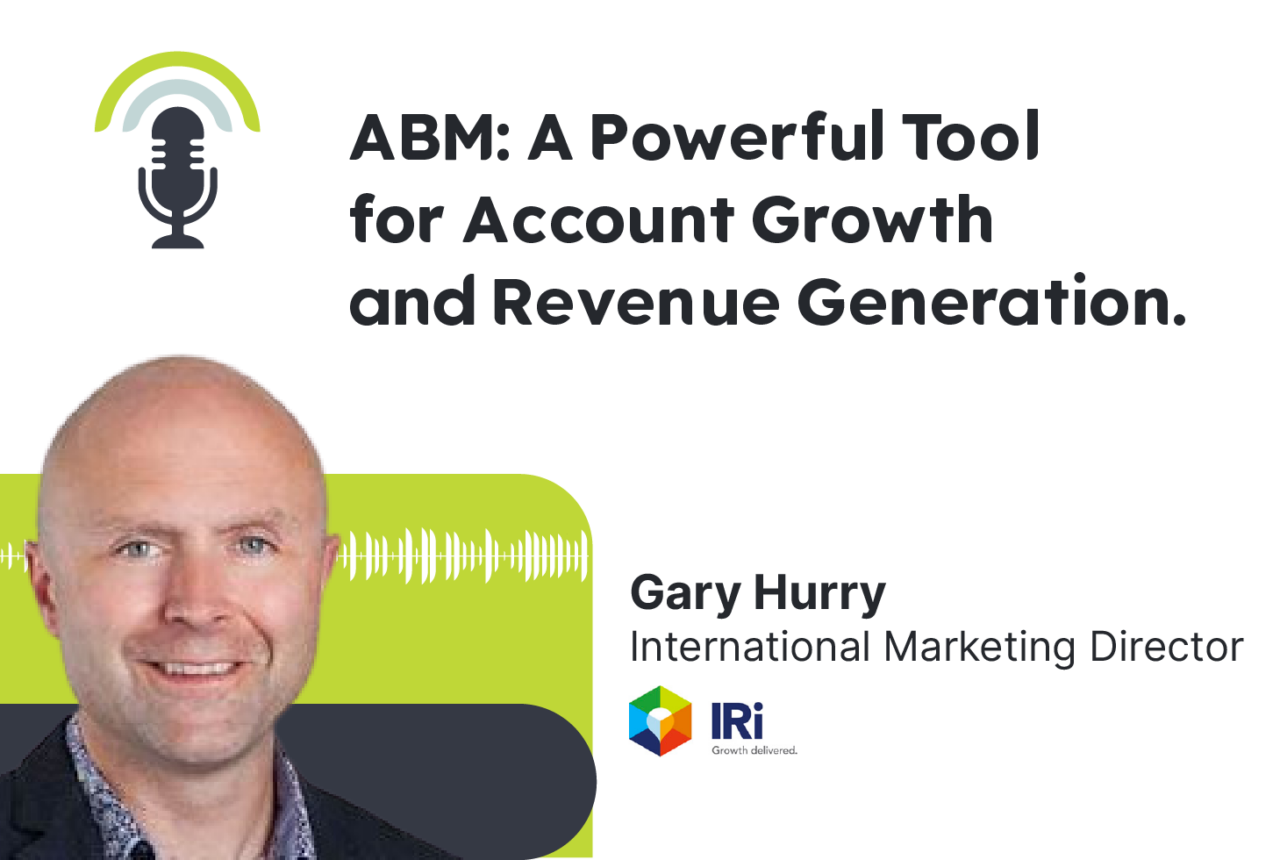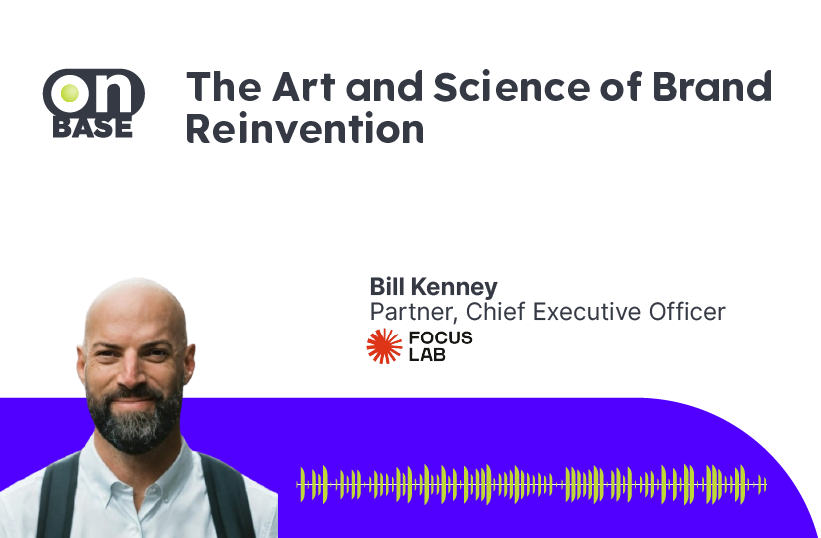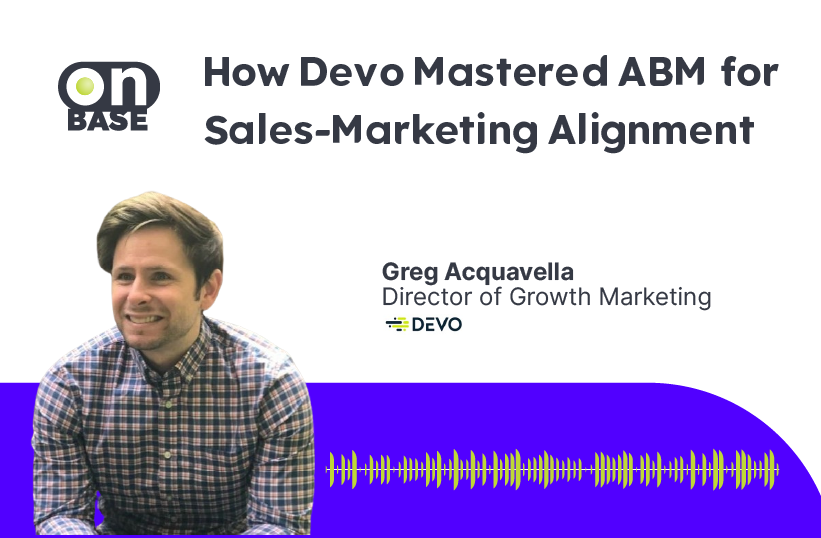
ABM: A Powerful Tool for Account Growth and Revenue Generation.
Shownotes
This episode of Sunny Side Up features Gary Hurry, international marketing director for the global analytics giant IRI. Over the past year, he has instituted cross-department alignment around account-based marketing (ABM), yielding great results. Previously marketing lead at Thomson Reuters, he has a strong track record driving major revenue growth within B2B and B2C brands. Gary is an innovator and visionary who shares his passion for implementing and optimizing commercially successful ABM systems for marketing purposes and equally as a demonstrable engine of growth through the identification of leads, retention, and expansion of business. He also offers up some recommended reading and advice for marketing leaders interested in the step-by-step process entailed in rolling out an ABM initiative.
About the Guest
Gary is a dynamic and high-impact Executive Marketing Director with a proven track record of driving major revenue growth and transformation within international B2B and B2C brands. He is a strong innovator and visionary with a passion for creating commercially successful and award-winning marketing teams that fuel heightened company success.
Key Takeaways
- To what degree ABM systems were in place when Gary arrived at IRI.
- What adoption looks like at the outset – including a range of reactions.
- Are certain departments more – or less – likely to align around ABM systems?
- How Gary defines success in the context of the implementation of ABM at IRI.
- What IRI does in terms of attribution.
- Thoughts on so-called “vanity metrics” and revenue generation.
- Advice for marketing leaders interested in initiating ABM.
Quotes
“For anybody thinking about ABM, really don’t underestimate that alignment across commercial and marketing teams. It’s absolutely critical.”
“Joint account planning is so critical. We spend probably 80% of our energy on that and 20% on the tech, the advertising, the activation, the personalized marketing program.”
Highlights From the Episode
What was the initial level of awareness and understanding around ABM at IRI?
There were pockets of awareness about account-based marketing (ABM) among those who had encountered the system at previous jobs elsewhere, but a very little foundation for building out a consistent process knit into the corporate culture. The smart targeting and the clear sales and marketing alignment were quite limited at the outset.
Were people generally receptive to adopting ABM concepts?
Team members are generally very enthusiastic and supportive about the idea of improving effective targeting and personalization deeper connections with core accounts and prospects. It’s really the mechanics of how we bring those concepts to life that has included some variability, which is to be expected at any organization. Several predictable reactions at play: those who are no-holds-barred and want to get started immediately (even if the proper training and methodology aren’t in place); a subset who see ABM as a marketing tool exclusively; those who are supportive but tentative while learning how to move forward; and some who find ABM an outright threat to their day-to-day role within the organization.
Is it possible to generalize the response to the introduction of ABM?
Marketing and sales seem to quickly understand the tool’s power and potential for advantage. Still, ABM can never truly fulfill its potential if the program is not really embedded within an organization using a common language and shared account planning. Communication and collaboration must be thoroughly aligned internally, followed externally by the education process to ensure that the concept lands.
What single success would Gary most like to achieve within IRI?
Marketers can be prone to hype, but ABM has gone beyond that stage to something people have understood and integrated. The critical success factor is the absolute alignment across the organization, including what ABM is and isn’t and what it can do. Joint account identification and planning efforts can define market retention and expansion limits. Gary’s programs are completely integrated and transparent. They are not executed in isolation. Measuring success is not always straightforward as compared with traditional demand generation. Rather it is measured in the levels of depth of engagement among top accounts and in longer-term, more classic pipeline generation. ABM is a program that measures and drives, and influences sales cycles.
Does IRI do anything in terms of attribution?
Media optimization, metrics, and models are all central to solutions that IRI provides, so implementing internal measures shouldn’t be overly challenged, but it has not historically been deployed across the enterprise. Relying on traditional last-touch attribution doesn’t work because of the many factors that influence the equation (marketing, pricing, economic conditions, procurement pressures). It’s critical for marketers to raise their game in terms of the totality of their influence and be able to attribute commercial growth to the relevant elements.
Can you share thoughts on “vanity metrics” versus measurable commercial outcomes?
Gary says he wouldn’t go into a leadership meeting trumpeting click-thru rates or a banner ad because “quite frankly I’d be laughed out of the room.” Where marketing once tried to prove its value-add through impressions and clicks, now it’s all about commercial outcomes. Marketing organizations that understand today’s nuanced world, including long sales cycles and complicated, multi-party decision-making, will be far more likely to deliver results.
Are any of Gary’s goals and objectives related directly to revenue generation?
Gary and his team have actually set a revenue target for themselves, which is somewhat new but essential. It focuses teams on the ultimate goal of driving business, engagement, and growth versus metrics that offer no quantifiable results. His team has a framework that lays out ABM objectives, goals, and plans in a broader business and revenue generation context rather than more narrowly focused traditional marketing programs. Whether retention, expansion, or net new business, opportunities can be leveraged across the board.
Any advice for leaders trying to implement a new ABM system?
Above all else, Gary urges the right mindset. Don’t regard your ABM program as a short-term initiative. You’ve got to be in it for the long haul because it takes a little time to mobilize, and the impacts are rarely in the immediate term. He also emphasizes how critical it is to get solid alignment across departments by defining what ABM means and how it can benefit key stakeholders, who are then empowered to evangelize and animate use cases. Finally, invest early in connecting deeply with sales teams to understand account planning issues and goals. Tech may enable to some degree, but it’s not ultimately the primary driver of expansion and new business growth.
Recommended Reading/Resources
- Propolis, is a platform featuring unbiased experts, training, technical education, research, and ABM-related resources for B2B marketing and growth.

Sunny Side Up
B2B podcast for, Smarter GTM™



